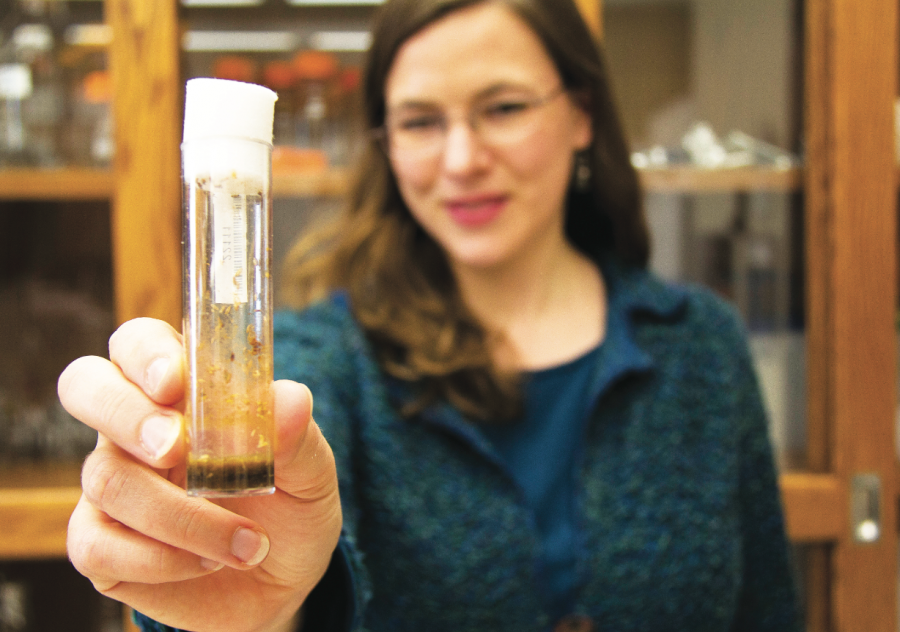When working with fruit flies, assistant biology professor Laura Reed looks for a genetic mechanism behind metabolic syndrome, which is predictive of type 2 diabetes and cardiovascular disease.
“Basically, what I’m trying to figure out is, if a person gets diabetes, to what extent is the cause of that genetic, and how much of that is environmental, such as diet?” Reed said. “We’re doing this using fruit flies as a mode.”
Reed said although it may not seem like it, fruit flies and humans are evolutionarily similar.
“Fruit flies and humans are actually pretty similar to each other evolutionarily,” she said. “We feed different genotypes of fruit flies different diets, so maybe they get a high-fat diet or high-sugar diet, and we can analyze how much of the variation in their disease is because of their genotype and how much is because of their diet.”
Reed said the research is trying to determine and explain the differences in how individuals react to different diets.
“You probably know some people who can eat whatever they want and never gain or lose weight, and there are other people who have to be very careful about their diet,” she said. “This indicates that there are differences in the way individuals react to their diet, so I was interested in trying to figure out why.”
(See also [Video] “Rama Jama’s Story”)
Reed said finding the actual genes that dictate these differences could eventually lead to improved medical treatment pertaining to type 2 diabetes and cardiovascular disease.
“If we can find the actual genes, then we can understand better the mechanism and figure out what are the physiological pathways that were being changed with a change in diet in one organism versus another,” she said, “and eventually, probably not with work in my lab, this could lead to improved treatments or improved preventative measures for humans if we can understand the mechanism, the reason why different genotypes react differently to their diets.”
Reed said fruit flies make a good model organism due to their similarities to humans, short generation time, size and the abundance of information already discovered about them. For instance, the entire genome sequence has been mapped.
UA undergraduates carry out most of the day-to-day tasks on this project, which is funded by a $1.4 million grant from the National Institutes of Health.
“The grant project takes a lot of group effort, and we are always crossing fly lines and separating ‘virgin flies,’” Ashley Gilchrist, a sophomore majoring in biology, said. “We monitor the flies throughout their short life cycles and collect some of the dark pupae (pre-adult phase) to weigh. Right now we are working hard to weigh and sort collected pupae.”
Reed said she feels it is very important for undergraduates to be able to take an active role in research.
“I like working in Laura’s lab for two main reasons,” Matt Kieffer, a sophomore majoring in biology and French, said. “The first is that the research we are doing as a team has the potential to influence/affect people all over the world. The second is due to the inclusive environment of the lab. We joke in our lab saying that we are not just the Reed lab but rather the Reed family. Research is a challenging job, but the environment created by our lab makes research not only fun but also acts as an opportunity to learn and grow as a researcher in a non-hostile, uplifting atmosphere.”
Leading in today’s Crimson White:
Online brain training may keep minds sharp







